1.6.1. Bézier Curve
Experience the Bézier Curve
Have a look at the following interaction part. You can experience the characteristics of a cubic Bézier curve without having any knowledge of their theory. Later on we will explain their characteristics. You can change the form of the curve by moving the blue circles.
Cubic Bézier-Curve, DemonstrationNote that the demonstrated cubic Bézier curve is a sub type of Bézier curves in general.
Formula of Bézier Curves
Bézier curves are widely used in computer graphics to model smooth
curves.
A n-dimensional Bèzier curve is a curve of degree
n. It is composed of Bernstein basis polynomials of degree n:
with the
Bernstein basis polynomials of degree n defined as:
Pi is called control point for the Bézier curve. By connecting all control points with lines, we receive a polygon - starting in P0 and finishing in Pn - that is called Bézier polygon. The Bézier curve is completely contained in the hull built from the Bézier polygon.
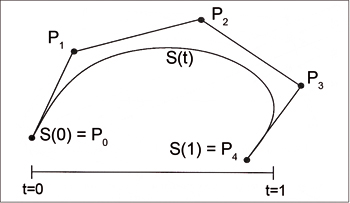 Bézier Curve of degree 4. (GIGER-HOFMANN 1992)
Bézier Curve of degree 4. (GIGER-HOFMANN 1992)We go back to the issue of the Berstein polynomials: The Bernstein polynomials are the weighting functions for Bézier curves. The following image shows the Berstein polynomial functions of a Bézier curve of degree 5. You can see how much influence has each polynomial on the curve progression. For example at t=0 only b0 is nonzero. Therefore all other polynomials don't have a bearing on the curve progression in the point S(t=0).
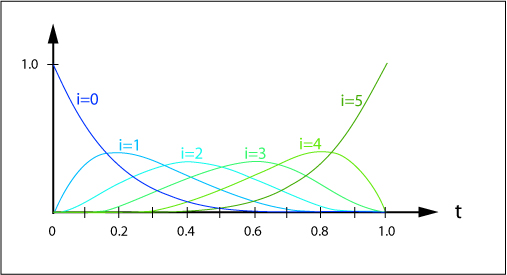
Characteristics of Bézier Curves
The following list contains the main characteristics of Bézier curves
- The starting point of the curve is P0 and the ending point is Pn.
- Normally, the other control points are not positioned on the
curve.
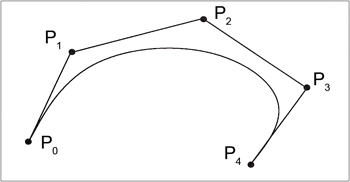 Bézier Curve of degree
4. (GIGER-HOFMANN 1992)
Bézier Curve of degree
4. (GIGER-HOFMANN 1992) - The Bézier curve is completely contained in the convex hull built from the
control points.
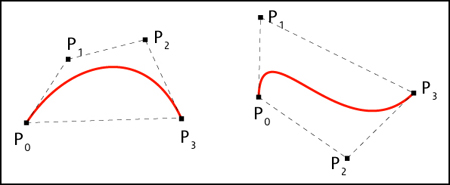
- If and only if all control points lie on the curve it is a straight
line.
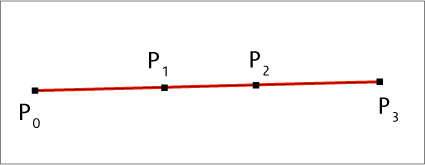 All contol points on the
curve
All contol points on the
curve - The start (end) of the curve is tangent to the first (last) section of the
Bézier polygon.
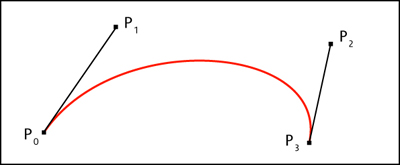 Tangents of the curve
Tangents of the curve - Pi provide the direction of the
curve (they pull the curve in their direction). The weighting of the points
depends on the Bernstein polynomials and therefore on t as you could see
above.
 Weighting of control points according to (WATT et al. 1998)
Weighting of control points according to (WATT et al. 1998) - A curve can be split at any point into 2 subcurves, or into arbitrarily
many subcurves, each of them is also a Bézier curve.
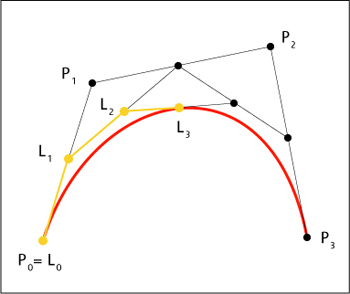 Subdivision of Bézier curves
Subdivision of Bézier curves
